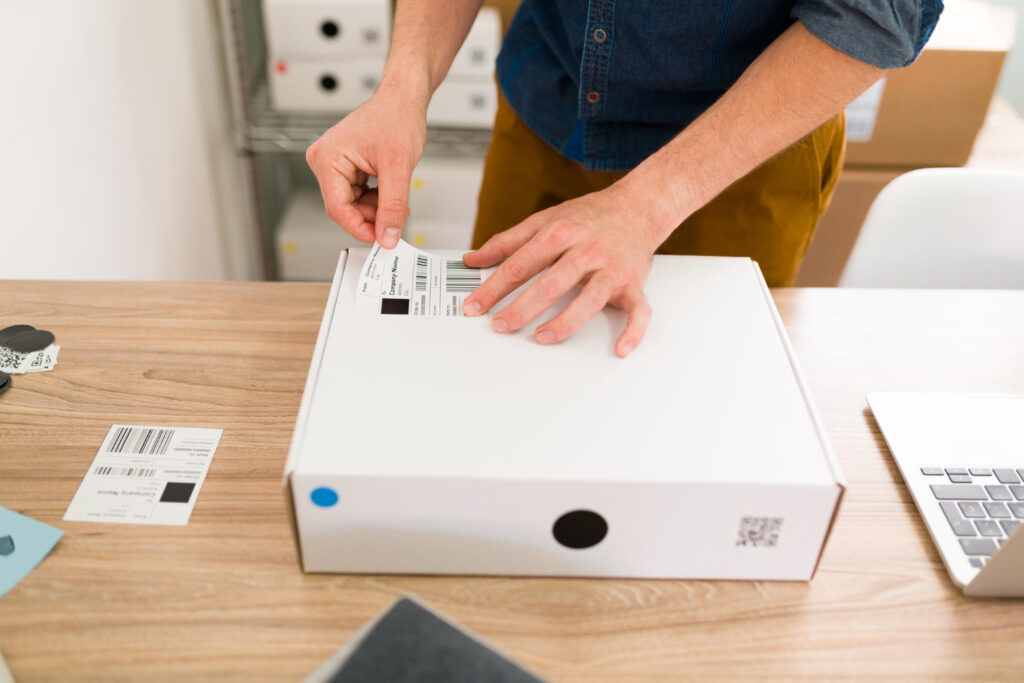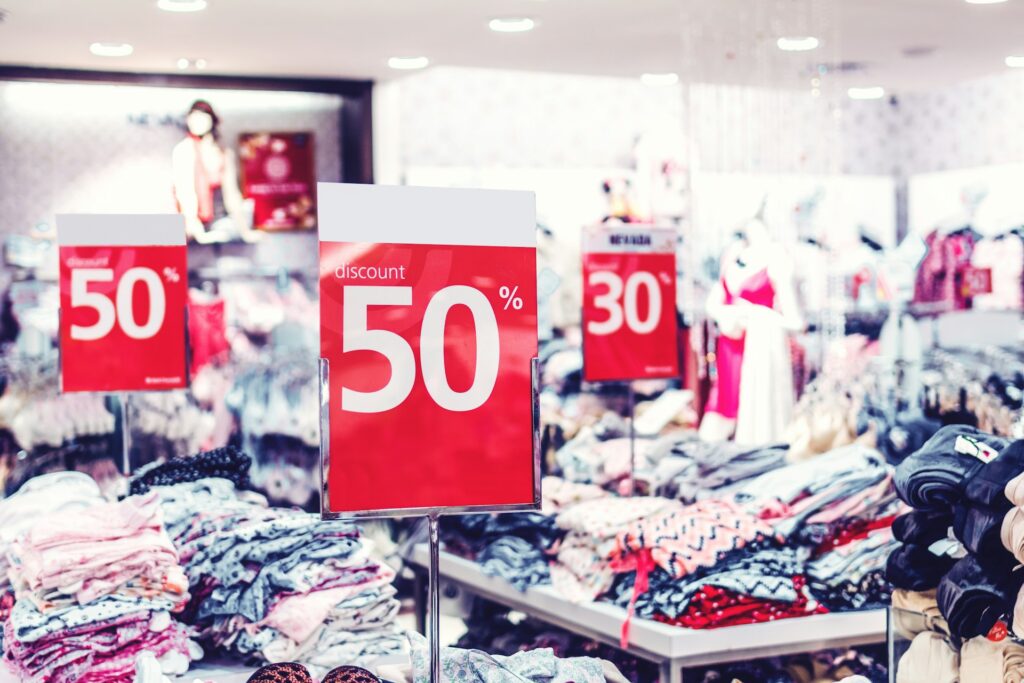- Blog
-
For Sellers
Amazon seller insights to leverage in your business
The Amazon marketplace is full of potential if you know where to look.

Amazon’s seller landscape has exploded. Right now, over 2.4 million sellers are actively competing for customer attention, with hundreds of new sellers joining every single day. The platform processes billions of transactions annually, and sellers are making serious money.
But here’s what those numbers don’t tell you: success isn’t guaranteed just because you show up. The sellers who thrive understand the data behind the platform. They know which categories convert, where competition is manageable, and how to leverage Amazon’s various fulfillment models to their advantage.
Let’s break down what’s actually happening on Amazon, from seller distribution across global marketplaces to the product categories generating the highest returns. These insights come straight from current marketplace data, and will give you a clear picture of where opportunities exist—and where competition is fiercest.
1P and 3P Amazon sellers
The current number of active Amazon sellers shows the marketplace’s scale. Amazon provides diverse selling options, including first-party (1P) vendor sales.
First-party vendors sell to Amazon directly via Amazon Vendor Central. In this method, vendors send inventory to Amazon, letting the platform handle pricing and display “ships from and sold by Amazon.com” on listings. Advantages of 1P sales include wholesale purchases, priority selling, and building brand trust through Amazon’s esteemed seller status.
Selling your products directly to Amazon as a first-party vendor has some notable drawbacks. One primary concern is the inability to engage with your customers directly, and you also have restricted control over how you price your products.
Opting for Vendor Central means you might experience a lack of insight into the sales process and a diminished sense of ownership over your brand. Additionally, there’s the risk of facing lower profit margins and the potential of selling your products below the Minimum Advertised Price (MAP) guidelines, all due to the wholesale arrangement with Amazon.
Conversely, Amazon enables third-party (3P) sales, letting individuals and professionals join its marketplace. 3P sellers manage orders through Fulfillment by Amazon (FBA) or Fulfillment by Merchant (FBM). Products can be displayed as “sold by MERCHANT and Fulfilled by Amazon.” At times, it will also note that the transaction is fulfilled by the merchant.
A study reveals that 44% of SMB Amazon sellers are profitable, earning profit margins above 15%, showcasing the potential for success. Third-party sales offer sellers a strategy to address certain drawbacks of first-party sales, such as enhanced margins with improved pricing control, more favorable payment terms, and reduced dependence on the Amazon relationship. In Q3 2023, 60% of paid units were sold by 3P sellers.
Amazon employs 1P and 3P models to provide customers with diverse products at competitive prices. Generally, Amazon 1P suits high-volume and branded items, while Amazon 3P is ideal for unique or niche products not commonly found in traditional retail channels.
Amazon marketplace figures
Once a modest online bookstore, Amazon is now a global powerhouse with 2.7 billion web visits in September 2025. And that traction shows in various other ways.
For instance, Amazon shared that they had their biggest Cyber Monday and Black Friday week the previous year. They also ship over 17 million packages daily, reinforcing their dominance in ecommerce alongside a vast product selection and competitive pricing.
Undoubtedly, Amazon stands out as the global choice for customers, meeting various needs, from advanced tech gadgets to essential household appliances. The ecommerce platform has also ventured into finance, self-publishing programs, and over-the-top platforms. And so, while many moving parts help make your Amazon venture a success, penetrating the market is doable.
For new Amazon sellers, especially, the figures are promising:
- Earning potential: Most make $1,000+ monthly, and top sellers reach $100,000+.
- New sellers: Average annual profit of $30,000.
It’s worth noting that not everyone achieves equal levels of success. Specifically, 22% of sellers make less than $500/month, and 3% are uncertain about their monthly sales. That being said, starting an Amazon, even just as a side hustle, is a great way to earn passive income.
In 2021, about 3,700 new sellers became a part of Amazon every day. The top three countries with the highest number of new Amazon sellers are:
- US marketplace: 76,769 new sellers
- Indian marketplace: 29,798 new sellers
- Canadian marketplace: Over 22,088 new sellers
With this continuous growth, Amazon’s popularity is soaring, providing an opportunity to reach a broader audience. However, it’s also crucial to acknowledge the increased competition. Using Amazon seller resources is a definite plus to thrive in this environment.
Amazon marketplace numbers vary across countries. Let’s look into the specifics:
Amazon US marketplace
- Amazon Marketplace boasts 2+ million sellers, and nearly half (47%) are headquartered in the US.
- US sellers on Amazon shipped a staggering 4.1 billion items worldwide, averaging over $230,000 in sales each.
- 63% of US consumers start their product searches on Amazon, with 89% opting for its convenience.
- 163.5 million US subscribers fuel Amazon’s Prime revolution, with projections of over 176 million by 2025.
Amazon UK marketplace
- Amazon is the leading online marketplace in the UK, with over 374 million monthly visitors.
- Amazon.co.uk has over 281,200 active market sellers.
- 90% of UK adults use Amazon, and 40% of Amazon customers in the UK use Prime.
- Amazon’s UK net sales in electronics and media are over $5 billion, representing 30-35% of the market share.
- Amazon UK’s gross sales may reach £77.1 billion by 2025, potentially surpassing Tesco as the market leader.
Amazon enjoys popularity across various European nations, too. According to Statista, the following countries trail closely behind the US and UK in terms of active sellers:
- Germany: 244,425 active sellers
- Italy: 216,610 active sellers
- France: 211,859 active sellers
- India: 205,884 active sellers
In addition, Spain, Japan, Canada, and Mexico comprise the top ten countries with the highest active sellers. Across the globe, Amazon faces tough competition in Asia. Rivals like Alibaba, AliExpress, Lazada Marketplace, and Shopee dominate the Asian market.
Looking at Amazon’s best-selling products
Amazon has 30+ product categories for third-party sellers. While many categories don’t need approval, others require Amazon’s consent before listing a product.
Let’s explore the top Amazon product categories:
- Tools and Home Improvement: The demand is soaring as more DIY enthusiasts emerge. Experts predict a notable 4.37% growth from 2023 to 2030.
- Toys and Games: This particular category has a constant demand. Educational and movie-themed toys are becoming increasingly popular as they offer entertainment and educational value.
- Electronics: Electronic products have become essential for the average consumer in our technology-dominated era. Smart home appliances have experienced significant success in recent years.
- Sports and Outdoors: Fitness essentials such as hydration flasks, resistance bands, watches, and yoga mats are at the top of the list for this category.
- Home and Kitchen: Highly profitable, this category offers diverse product selections. Items that significantly enhance home living quality are in high demand.
- Video Games: The market is projected to reach $268.8 billion by 2025, indicating a robust demand for video game-related products.
- Camera and Photo: Products in this category enjoy widespread success, especially Wi-Fi-enabled cameras, indoor security cameras, lighting domes, tripods, and flashes.
- Clothing, Shoes, and Jewelry: This market is diverse and vast, with name brands, artists, and solopreneurs competing for the enormous fashion market.
Here are the top 10 product categories listed by sellers on Amazon US:
- Home and Kitchen
- Beauty and personal care
- Clothing, shoes, and jewelry
- Toys and games
- Health, household, and baby care
- Baby products
- Electronics
- Sports and outdoors
- Pet supplies
- Office supplies
Here are the top-selling categories on Amazon UK:
- Gift cards
- Electronics
- Cameras and photography products
- Video games
- Books
- Clothing and accessories
- Beauty products
- Home and Kitchen
- Pet supplies
- Sports and outdoor
Distinctive features among Amazon categories
Various factors contribute to their uniqueness when navigating through Amazon’s diverse categories. Here are some critical differentiators:
Sales expertise
The skills necessary for successful selling vary based on the category of your chosen product. Group A categories demand a seasoned approach, while Group B is more beginner-friendly.
Group A categories include apps and games, automotive parts and accessories, industrial and scientific products, and musical instruments, which almost half of the sellers with advanced expertise prefer. Group B examples are toys and games, books, electronics, and appliances, chosen by about 27% of new sellers as their starting point.
Sales and business models
These are the various business models available for sellers on Amazon:
- Online arbitrage: Strategic acquisition of discounted online products for resale on Amazon, maximizing profit through opportunistic buying.
- Private label: Developing and marketing unique branded products, fostering customer loyalty, and potentially higher profit margins.
- Dropshipping: Order fulfillment through intermediaries, managing customer interactions without inventory, and minimizing upfront costs.
- Retail arbitrage: Purchase discounted in-store merchandise for online resale, leveraging bargains and online reach.
- Wholesale: Bulk purchase of discounted goods for individual resale, prioritizing volume discounts and efficient inventory management.
- Handmade: Direct sale of personally crafted products on Amazon, capitalizing on unique creativity and consumer connection.
Monthly sales potential
On average, sellers have the potential to earn between $1,000 and $25,000 from each category. However, it’s essential to note that categories like handmade, books, and cell & accessories typically yield monthly sales under $1,000. Conversely, categories such as Musical Instruments, Computers, and Industrial & Scientific have the potential to generate over $50,000 for sellers.
Profitability insights
Regarding profitability, profit margins can range significantly, spanning from 16% to 32%. Despite the slightly higher costs associated with raw materials and time investments, handmade products emerge as the most lucrative, boasting a 32% profit margin. Here’s a breakdown of the top five Amazon categories ranked by average profit margin:
- Handmade: 32%
- CD and Vinyl: 27%
- Apps and Games: 25%
- Industrial and Scientific: 25%
- Luggage & Travel Gear: 25%
Amazon fulfillment options
Amazon provides sellers with these fulfillment methods:
- Fulfillment by Amazon (FBA)
- Fulfillment by Merchant (FBM) or Merchant Fulfilled Network (MFN)
- Amazon Seller Fulfilled Prime (SFP)
Selecting the best product category for Amazon sales
Setting up your Amazon seller account is quite easy, even for first-timers. But the real challenge is choosing the right product category to maximize your sales. Research is vital, covering product selection, competitor analysis, understanding customer preferences, and crafting effective advertising strategies. Here are essential tips for your product selection journey:
Profit margins analysis
Dig into all of the costs—manufacturing, shipping, advertising, and storage fees. Choose products where your selling price comfortably covers all costs, ensuring a robust profit margin. It’s like discovering golden nuggets and optimizing your return on investment while delivering fair value to customers.
Customer insights from reviews
Embrace the collective wisdom of customer feedback. Immerse yourself in product reviews, not just the glowing accolades but the detailed critiques. These reviews are invaluable mines of information. Identify recurring pain points, missing features, and desired improvements. Use this insight to refine your product, turning customer feedback into a strategic advantage.
Optimal size and weight
Bear in mind Amazon’s storage is finite, impacting shipping costs. Prioritize compact, lightweight products without compromising quality. Streamline packaging, explore lighter materials, and consider collapsible or modular designs. A trim product means lighter wallets for both you and your customers.
FBA compatibility check
While FBA can be influential, not every product syncs with its rhythm. Evaluate compatibility before committing. FBA excels with fast, standardized items. If your product demands special handling, has slow turnover, or faces uncertain demand, FBA might not be the best fit. Weigh the advantages and disadvantages, explore alternative fulfillment options, and strategically decide on a seamless, efficient operation.
Amazon-labeled challenges
Facing Amazon’s brands is confronting a formidable foe. Their vast resources and preferential treatment in the marketplace make them formidable rivals. Choose products in distinct niches, offering unique functionalities or targeting specific demographics.
Crowded category caution
Entering a saturated Amazon category means advertising costs soar, visibility diminishes, and standing out can be challenging. If venturing into these crowded shores, craft a solid strategy. Introduce a game-changing twist, foster a loyal community, or deploy targeted marketing to claim your spot.
A set of criteria
Adhering to a set of criteria makes judging potential products more manageable and systematic. Here are some examples to consider:
- Identify market trends without succumbing to fleeting fads. Prioritize top-selling products with sustained demand.
- A product averaging at least ten daily sales signals market demand—consider such products for your inventory.
- Go for products with consistent year-round demand for sustainable growth. While seasonal items can bring profits, prioritize perennial sellers.
- Don’t overlook international markets for expanded opportunities.
- Leverage solutions from software providers like Threecolts with products and solutions to uncover in-demand products, emphasizing low competition and monthly sales volumes.
- Choose economical products for manufacturing or acquisition.
- Avoid fragile, perishable, or prone to damage, as shipping them can be challenging.
- Thoroughly assess product quality before purchasing, especially for Amazon FBA sellers.
Increase your Amazon sales with insights-based strategies
The Amazon marketplace continues to reward sellers who understand the numbers behind success. With many sellers turning a profit and strong margins available across multiple categories, the opportunity remains substantial for those who approach it strategically.
Success comes down to smart product selection, understanding your market dynamics, and having the right tools to compete effectively. The sellers who consistently outperform their competition aren’t just working harder—they’re working with better data and more efficient systems.
Ready to join the profitable majority of Amazon sellers? Try Seller 365 free for up to 14 days and get the complete toolkit used by successful sellers worldwide. From product research and inventory management to repricing automation and profit tracking—everything you need is included in one subscription.






















